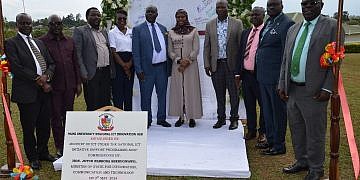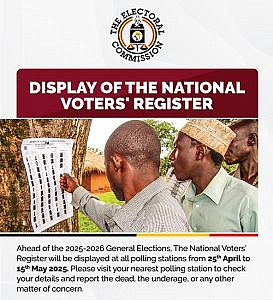The Ugandan government has broken its silence on the sharp falls of coffee prices which has left farmers crying foul.
In a statement on Sunday, the Minister for Agriculture, Frank Tumwebaze said a market analysis report has indicated that at farm gate level, Robusta (FAQ) is selling between shs 10,000–11,000 while Robusta (Kiboko) ranges between shs 5,000–5,500. Arabica (parchment) is trading between shs14,000–15,000 while Drugar coffee (clean) being sold at shs14,000–14,000.
“Coffee is an internationally traded commodity and traded on stock market. A decline in coffee prices can occur due to a number of factors,” he said.
Tumwebaze explained that the increase in prices in the past two was due to a combination of factors including increased global demand, adverse weather conditions affecting production, and rising costs throughout the supply chain.
He said droughts, floods, and extreme temperatures in key coffee-growing regions like Brazil and Vietnam had negatively impacted coffee yields, reducing the amount of coffee available for export.
“This situation affected mostly Robusta coffee hence making our Robusta highly demanded globally, thus the high prices farmers and other value chain actors have enjoyed until recently.”
The drastic fall
He also explained that coffee is traded globally at the coffee stock exchange.
“On international markets, Arabica coffee is mainly traded on the Intercontinental Exchange (ICE) Futures based in New York, while Robusta is traded on the London International Financial Futures and Options Exchange (LIFFE). Coffee is traded through futures contracts, which are agreements to buy or sell a specific quantity of coffee at a predetermined price at a future date. These contracts allow coffee producers and traders to hedge against price fluctuations, ensuring some economic stability. Investors also use futures contracts to speculate on coffee price movements,” Tumwebaze said.
According to the minister, the weather conditions in Brazil , one of the leading coffee producers in the world have recently improved leading to increased harvest expectations and are greatly contributing to the decline of coffee prices.
“As a result, coffee harvests are expected to be of good quality and plenty, which has offered a relief to the industry that had feared supply shortage due to drought. It is forecasted that Brazil’s Coffee Production will increase by 0.5% to 65 million bags in 2025/26 while Vietnam’s will increase from 29 million bags to 31 million bags.”
The minister said there is currently a rise in global coffee production, particularly Robusta, which has led to an oversupply in the market, driving down the prices.
“Vietnam has recently seen a significant increase in exports, further contributing to the downward pressure on prices. Fluctuations in currency exchange rates, especially the US dollar, is currently impacting on the profitability of coffee exports and hence reducing the market prices. 4.Demand for coffee: According to United States Department of Agriculture, World Markets and Trade Report-June 2025, the world coffee production for 2025/26 is forecasted to be 4.3 million bags higher than the previous year reaching a record 178.7 million due to continued recovery in Vietnam and Indonesia as well as record output in Ethiopia.”
World coffee bean exports are forecasted to be 700,000 bags higher reaching 122.3 million as gains from Vietnam, Ethiopia, and Indonesia more than offset losses from Brazil and Colombia. With global consumption forecast at a record 169.4 million bags.”
Rewrite as a credible media house, get keywords, suitable headline and meta description









































